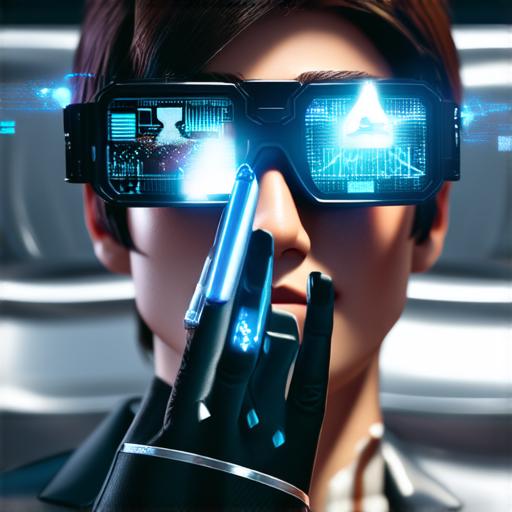Augmented reality (AR) is a technology that overlays digital information onto the real world, allowing users to interact with both the physical and virtual environments. In computing, AR refers to the use of software applications or devices to enhance the user’s experience of the real world by adding digital elements such as images, videos, and sounds.
What is Augmented Reality in Computing?
AR in computing is a technology that allows users to experience the real world in a new and interactive way. It enables users to see and interact with digital objects and information overlaid onto the physical environment. This technology is achieved through the use of sensors, cameras, and algorithms that track the user’s position and orientation in the physical world.
AR applications can be accessed through smartphones, tablets, or specialized AR glasses. These devices use a combination of computer vision and machine learning algorithms to identify the real world environment and overlay digital information onto it. This results in an immersive experience that blurs the line between the virtual and physical worlds.
Benefits of Augmented Reality in Computing
Healthcare
AR technology can be used to enhance medical procedures by providing real-time information and visualization of complex surgical procedures. For example, surgeons can use AR to visualize the patient’s anatomy and plan their approach, reducing the risk of complications and improving patient outcomes.
Education
AR technology can be used to create interactive and engaging learning experiences for students. For example, AR applications can bring textbooks to life by allowing students to explore 3D models of historical artifacts or scientific concepts.
Retail
AR technology can be used to enhance the shopping experience by providing customers with personalized recommendations and product information. For example, AR applications can allow customers to try on clothes virtually or visualize how furniture would look in their home before making a purchase.
Manufacturing
AR technology can be used to improve manufacturing processes by providing real-time information and visualization of complex production processes. For example, AR applications can allow workers to visualize assembly instructions and track their progress in real-time, reducing errors and improving efficiency.
Challenges Associated with Augmented Reality in Computing
Despite its numerous benefits, AR technology also presents several challenges that need to be addressed:
- Accuracy and reliability
- Privacy concerns
- User interface design

Real-Life Examples of Augmented Reality in Computing
Snapchat filters
Snapchat is a popular social media platform that uses AR filters to enhance users’ photos and videos. These filters allow users to add digital elements such as cartoon characters, text, and stickers to their photos, creating an immersive and interactive experience.
Pokemon Go
Pokemon Go is a mobile game that uses AR technology to bring the popular Pokemon franchise to life in the real world. Users can explore their surroundings and interact with virtual creatures, collecting rare items and battling other players. This game has been a massive success, demonstrating the potential of AR technology for entertainment and gaming.
IKEA Place
IKEA Place is an AR application that allows users to visualize how furniture would look in their home before making a purchase. Users can place virtual furniture in their home and see how it looks in different lighting conditions and with different decor items. This application has been instrumental in increasing sales for IKEA and demonstrating the potential of AR technology for retail.
Conclusion: Augmented Reality in Computing
AR technology is a powerful tool that has the potential to revolutionize many industries, from healthcare to retail. It provides users with an immersive and interactive experience that blurs the line between the virtual and physical worlds. However, there are also challenges associated with AR technology that need to be addressed, including accuracy and reliability, privacy concerns, and user interface design. By continuously improving their algorithms and sensors, developers can ensure that AR technology remains accurate and reliable, while also addressing privacy concerns and providing a well-designed user interface. With the increasing popularity of AR applications in various industries, we can expect to see more exciting developments and innovations in this field in the future.
